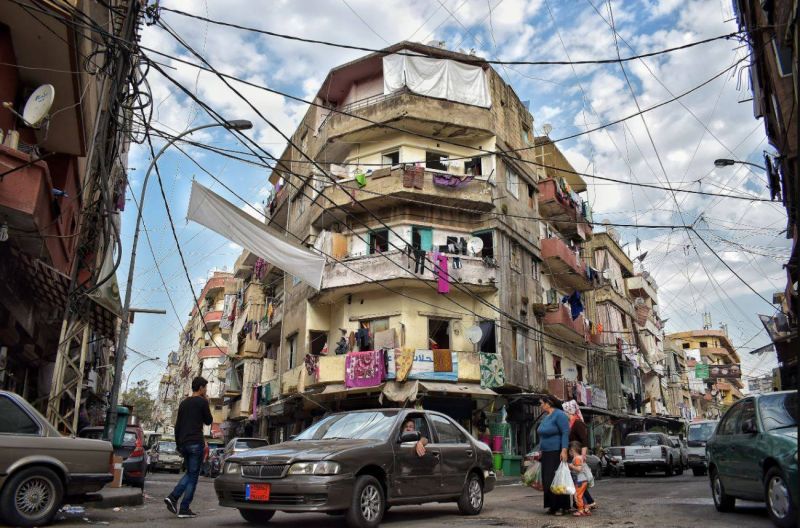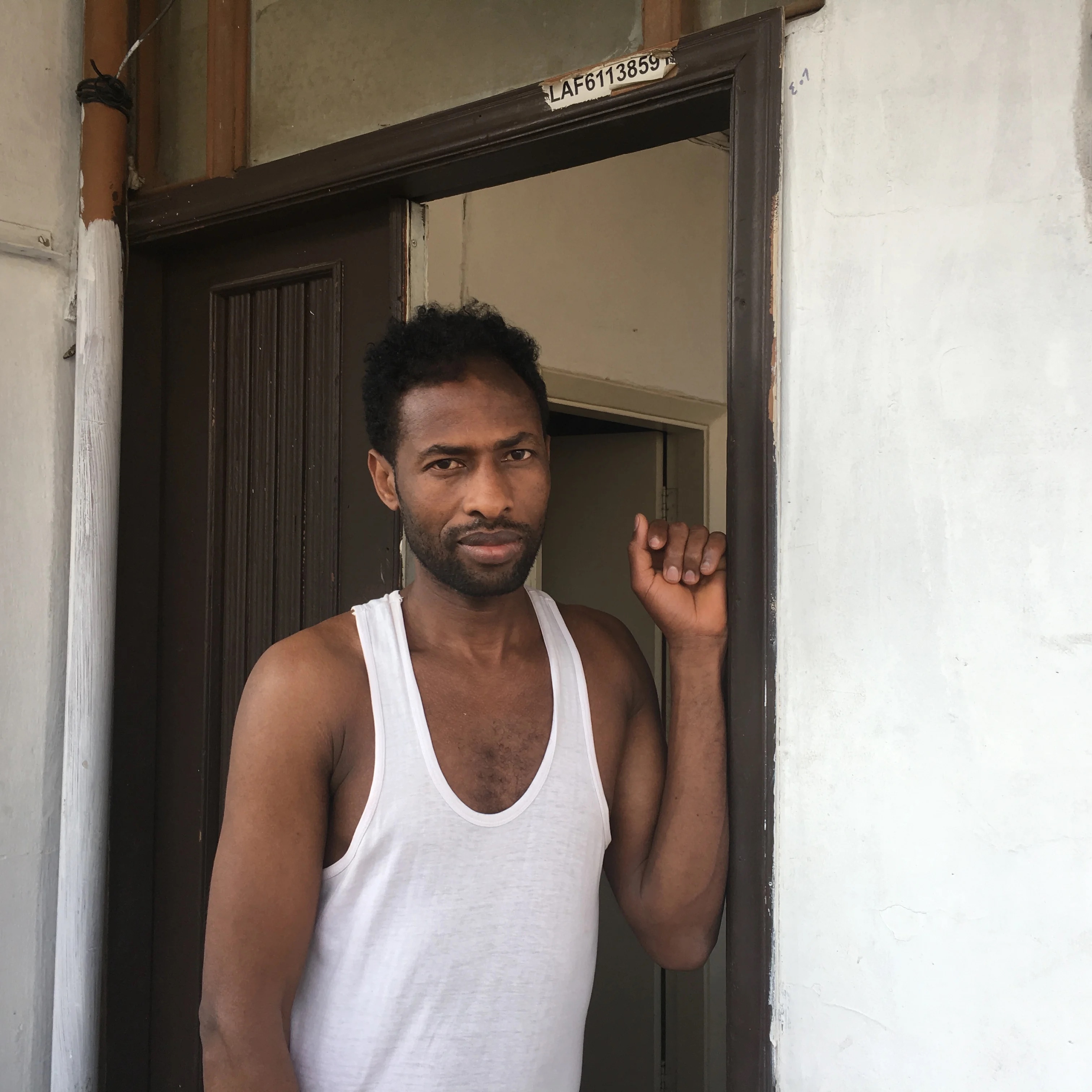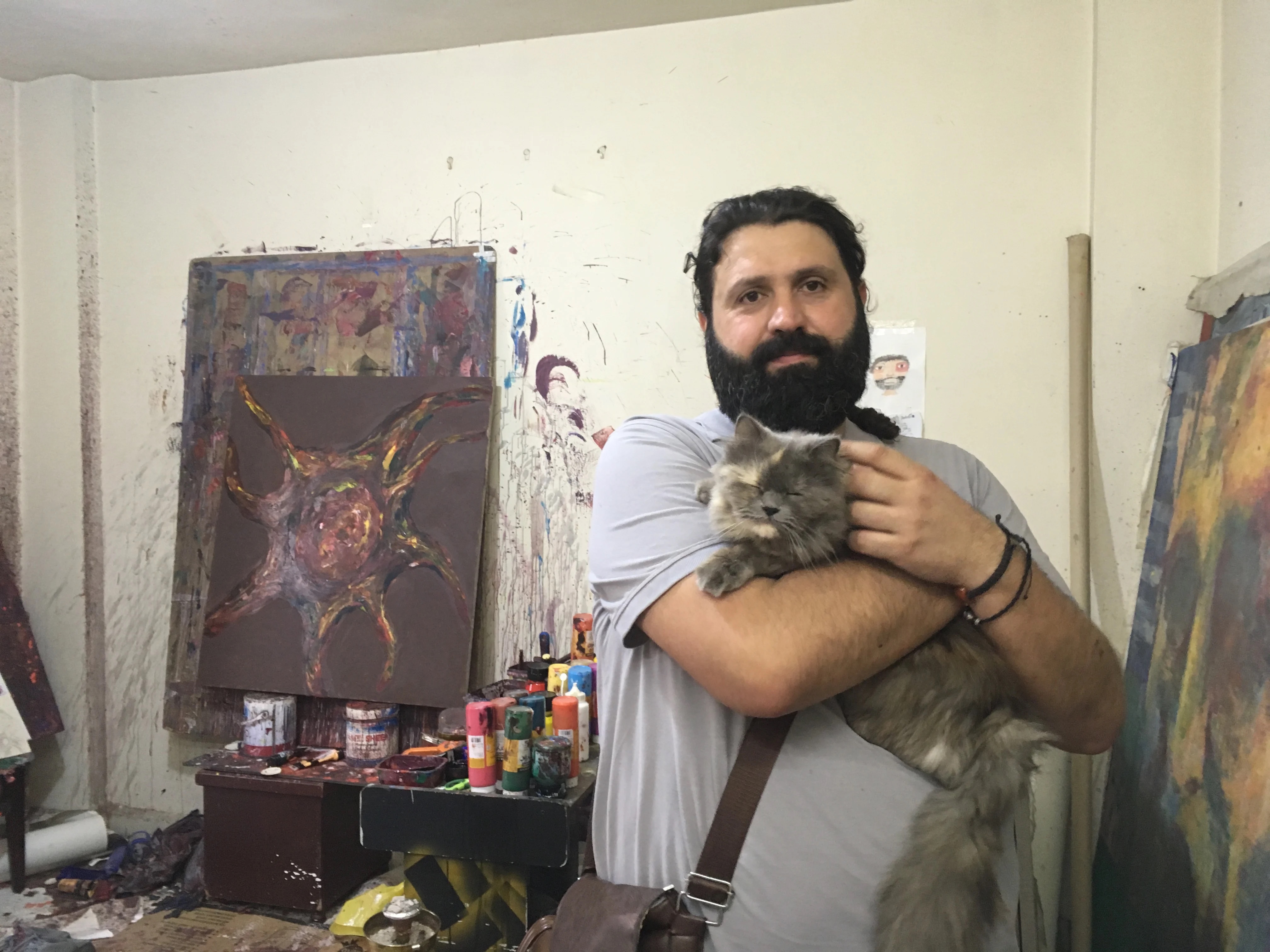
The Damourieh neighborhood in Beirut. (Credit: João Sousa/L'Orient-Le Jour/File photo)
In Beirut’s eastern suburbs, under the bridge linking Achrafieh to the industrial zone adjoining Dekwaneh, a neighborhood that borders Burj Hammoud, Sin al-Fil and Nabaa offers a colorful picture.
At dusk, men are seated in plastic chairs in a small square opposite a trailer serving drinks, as if in a sidewalk cafe, to play cards or chat as they watch the steady stream of vehicles of all kinds.
Neither the din of generators nor the stench of the open dumpsters, where children pick through rubbish for treasures, seems to disturb this friendly atmosphere.
The Damourieh neighborhood, which was named after the displaced population of Damour that moved there at the start of the Lebanese Civil War (1975-90), has seen an influx of African and Asian workers over the last few decades, who arrived in Lebanon under the kafala [sponsorship] system before they become illegal residents.
More recently, refugees fleeing the war in Syria have arrived, too.
 Omar, a maintenance worker from Sudan who lives in Damourieh. (Credit: Nada Ghosn/L'Orient-Le Jour)
Omar, a maintenance worker from Sudan who lives in Damourieh. (Credit: Nada Ghosn/L'Orient-Le Jour)
Cosmopolitanism against all odds
Rowena* whom we met at the entrance to one of the neighborhood’s streets, said she came from the Philippines 10 years ago to work as a domestic helper.
One day, Saleh*, a Syrian construction worker, came to do some work at Rowena’s sponsor’s house. It was love at first sight. Since then, the couple has lived in a small apartment in the neighborhood with their son.
“My husband would like to go back to Syria, but I’d rather stay in Lebanon. We have our lives here, even if our financial situation has deteriorated in recent years due to the crisis,” she told L’Orient-Le Jour.
Like Saleh and Rowena, many immigrant worker couples have made the Damourieh neighborhood their home, where Lebanese, Armenians, Syrians, Kurds, Egyptians, Sudanese, Nigerians, Ghanaians, Tanzanians, Ethiopians, Filipinos and Nepalese live together.
Some couples even met after moving there. Such is the case of Ghaboush, a Sudanese worker, and Abeba*, an Ethiopian employee, two next-door neighbors.
This coexistence tends towards cosmopolitanism, despite the difficult living conditions and prevailing racism. Displaced at the start of the civil war from an Akkar village, Mitri* had to fight to marry Mekdas*, the beautiful Ethiopian woman with whom he worked in the neighborhood.
“It’s a true love marriage. It took years for Mekdas to be accepted by my family and to obtain Lebanese nationality,” recalled this 50-year-old father of three.
Clandestinity
Madine* works in an Ethiopian bakery owned by a Lebanese national. “Everyone lives together here, although we sometimes get racist reactions,” she said.
“I sometimes hear insults in the street. I only hang out with people from my community,” said Omar, a maintenance worker who arrived in Lebanon eight years ago.
Like many of his fellow Sudanese, Omar, in his 30s, has been forced to stay put since war and political problems broke out in his country. “But here too, the situation is hard to bear,” he said. “My salary only allows me to survive. Before the crisis, I was able to send money twice a month to my family, all of whom depend on me.”
The sharp drop in wages and galloping inflation resulting from the economic crisis have pushed Omar and many other immigrant workers into cramped, often rundown and substandard housing.
“Overcrowding causes problems in the neighborhood,” he said. “There’s noise and constant movement. The buildings and infrastructure are not designed to be high-density.”
Janet* has chosen to live on her own. A 21-year-old Ghanaian who works as a cleaner, she admitted that she no longer has legal residency in Lebanon, like most people living in the area.
Her $300 monthly salary is enough to pay the rent and numerous bills, including a subscription to the electricity generator. “I don’t earn enough to eat and send money to my family. All the prices have gone up,” she said. But she is not willing to leave Lebanon as she is still working.
This busy street was known for prostitution. Recently, a building was evacuated by the security forces on suspicions on prostitution, its owner, seated in the corner cafe, told L’Orient-Le Jour.
He said that “the economic crisis is driving up rents, and the deteriorating security situation is encouraging illegal activities.
 Rawad, an artist, has a painting studio in Damourieh. (Credit: Nada Ghosn/L'Orient-Le Jour)
Rawad, an artist, has a painting studio in Damourieh. (Credit: Nada Ghosn/L'Orient-Le Jour)
An eventful history
A long-time resident of Hay al-Damourieh, Laurent lives in fear of no longer being able to pay the rent. Arriving here at the age of six with his parents, who fled the massacres perpetrated by pro-Palestinian fighters’ forces in Damour in 1976, he recounted that during this troubled period, families like his took the place of the Palestinians in this neighborhood.
“I grew up in a neighborhood where Lebanese Shiites and Christians lived in harmony. At the end of the war, many received compensation and left. The neighborhood’s identity changed,” he recalled.
Today, what Laurent says he fears most is that Syrian refugees, who arrived en masse in the past decade, will one day replace the last remaining Lebanese.
“The Syrians live better than we do as long as they receive aid from international organizations. They get enough to eat, and have access to education and health care,” he said, touting a growing sentiment among segments of Lebanese society.
However, Syrians in the neighborhood don’t seem any better off than their neighbors here.
At 6 p.m., Abir* picks up her four children from the primary school reserved for Syrian refugees. “My husband used to work in a bag factory, but he was sidelined,” she said.
To provide for the little family, Abir relies on the World Food Program’s monthly allowances, limited to food purchases, to the tune of around $20 per child per month. This has left her dependent on aid her sister sends her from abroad.
But it’s not all doom and gloom in Hay al-Damourieh. From the depths of poverty emerge unexpected creativity spaces. Rawad, a Syrian painter with a Lebanese mother who was born and grew up in Lebanon, has turned an apartment previously held by his brother into a painting studio for the past three years.
“I love this neighborhood’s diversity. The residents live together in relative harmony. It’s a meeting point for several suburbs: Dora, Nabaa, Burj Hammoud and Sin al-Fil.”
“It is a refuge where various nationalities have slipped in, sharing a common social status: invisibility.”
*First names have been changed to protect the identities of the people interviewed.
This article was originally published in French in L'Orient-Le Jour. Translation by Joelle El Khoury.
